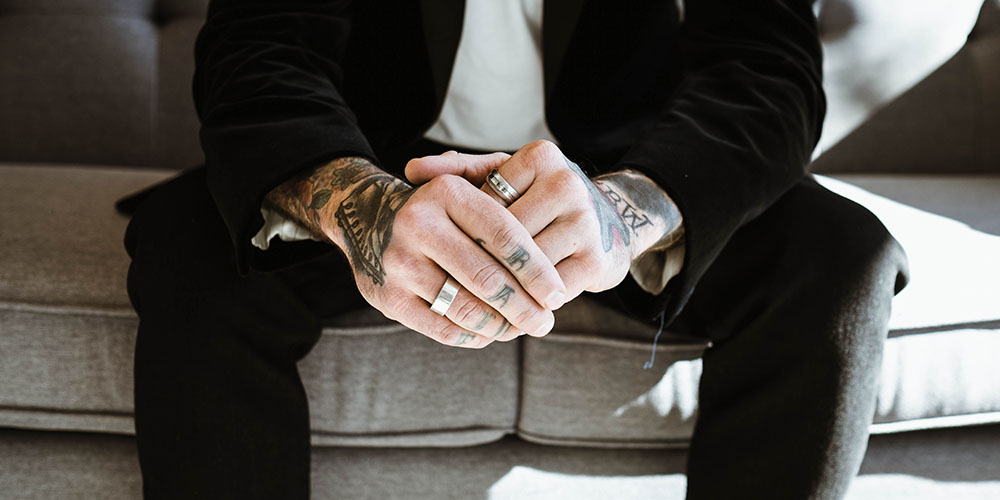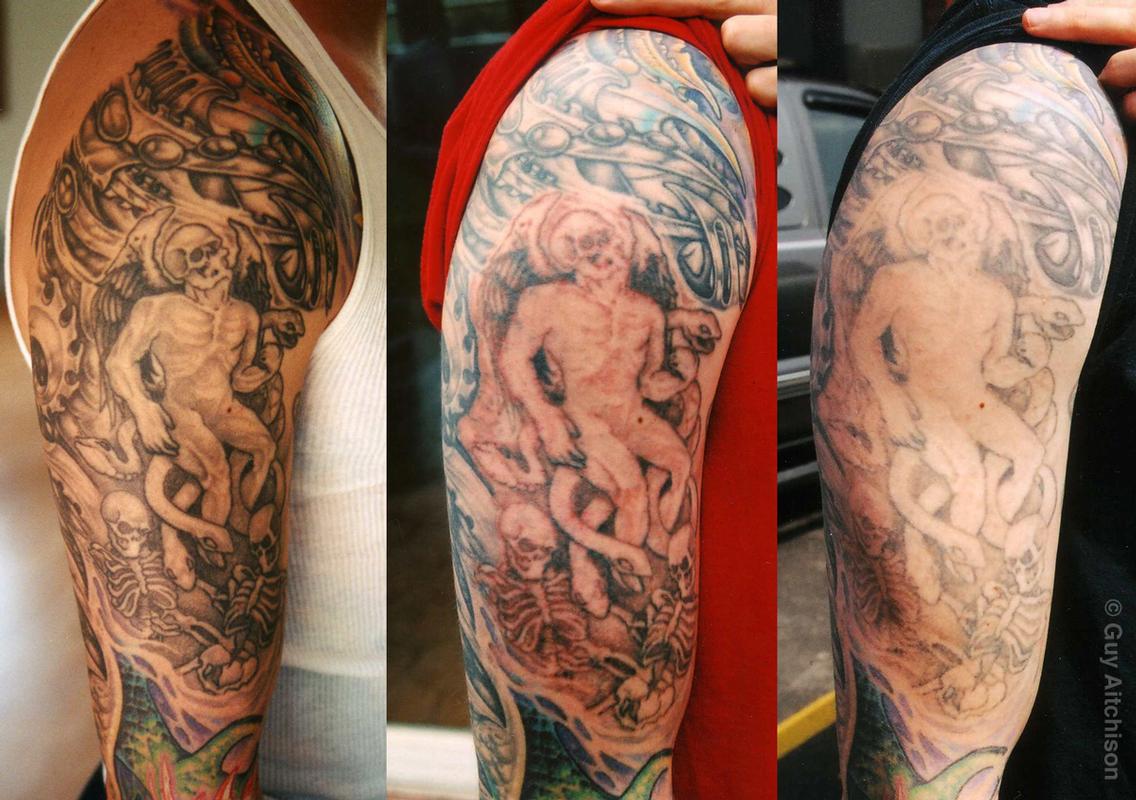
Okay, buckle up, tattoo enthusiasts! Let’s dive into the fascinating world of digital previews and ink commitment. Can you peek behind the curtain before the needle hits the skin? Let’s find out!
Can I Ask My Tattoo Artist For A Digital Preview Before Tattooing? Unveiling the Ink Before It’s Inked!
So, you’ve dreamt up the perfect tattoo. It’s swirling in your mind, a masterpiece waiting to be etched onto your skin. You’ve found the perfect artist, their style singing to your soul. But a tiny voice whispers, "What if it’s…not quite right?" Enter the digital preview, a tantalizing glimpse into your future inked self. But is it a standard offering? Let’s explore!
1. The Digital Preview: A Glimpse into the Future of Your Skin
Imagine holding a mirror to your future tattooed self. That’s essentially what a digital preview offers. Using software and sometimes sheer artistic skill, your tattoo design is superimposed onto a photograph of the area you want tattooed. It’s a sneak peek, a chance to fine-tune and tweak before the commitment is made.
2. Why You Might Crave a Digital Preview: Anxiety’s Antidote
Let’s face it, tattoos are permanent (or at least, really difficult to remove). The anxiety surrounding such a decision is completely understandable. A digital preview can act as a powerful antidote, easing your worries and allowing you to proceed with confidence. It’s like test-driving a car before buying it – ensuring the fit is perfect.
3. The Artist’s Perspective: A Balancing Act of Art and Technology
While the idea of a digital preview sounds fantastic, it’s important to understand the artist’s perspective. Not all artists offer this service, and there are valid reasons why. It’s a balancing act between embracing technology and maintaining the artistic integrity of their craft.
4. The Time Factor: Digital Previews Aren’t Always a Quick Process
Creating a realistic and accurate digital preview takes time. It’s not simply slapping an image onto a photo. The artist needs to consider the contours of your body, the way the design will flow, and how the colors will translate onto skin. This all adds to the overall preparation time.
5. Skill and Software: The Technical Requirements for Digital Magic
Not every artist possesses the software or the technical skills to create a convincing digital preview. It requires proficiency in photo editing software and a keen eye for detail. Some artists might prefer to focus on their core tattooing skills rather than investing time in mastering these digital tools.
6. Style and Artistic Vision: Preserving the Integrity of the Design
Some artists believe that a digital preview can limit the creative process. They might prefer to rely on their artistic intuition and experience to create a tattoo that flows naturally with your body. The digital preview, in their eyes, can sometimes stifle spontaneity and the organic nature of the art form.
7. When is a Digital Preview Most Appropriate? Complex Designs and First-Timers
While not always necessary, a digital preview can be particularly helpful in certain situations. Complex designs with intricate details, large-scale pieces, or even first-time tattoos are all scenarios where a preview can provide extra reassurance.
8. Communicating Your Needs: Open and Honest Dialogue with Your Artist
The key to getting what you want is open and honest communication with your tattoo artist. Express your anxieties, explain your vision, and ask if a digital preview is a possibility. A good artist will be receptive to your concerns and work with you to find a solution that works for both of you.
9. Alternative Solutions: Exploring Other Options for Visualizing Your Tattoo
If a digital preview isn’t an option, don’t despair! There are other ways to visualize your tattoo before it’s inked. Your artist can create a detailed sketch, provide color swatches, or even do a temporary stencil on your skin to give you a better sense of the placement and size.
10. The Stencil is Your Friend: Trusting the Traditional Method
Don’t underestimate the power of the traditional stencil! This is the method most artists rely on, and it’s been proven effective for decades. The stencil allows you to see the outline of the design on your skin before the tattooing begins, giving you a chance to make adjustments to the size, placement, and overall flow.
11. Finding the Right Artist: Compatibility is Key
Ultimately, the success of your tattoo experience hinges on finding the right artist. Look for someone whose style resonates with you, who is communicative and responsive to your needs, and who is willing to work with you to bring your vision to life.
12. Red Flags to Watch Out For: When to Seek a Second Opinion
If an artist dismisses your concerns, refuses to show you any form of preview (even a simple sketch), or pressures you into making a decision you’re not comfortable with, it’s a red flag. Trust your gut and seek a second opinion from another artist.
13. The Cost Factor: Digital Previews May Come at a Price
Be prepared that a digital preview might come with an additional cost. The time and effort involved in creating a realistic preview warrant a fee. Discuss this with your artist upfront to avoid any surprises.
14. Managing Expectations: It’s Still an Interpretation
Remember that even the most realistic digital preview is still an interpretation. The final tattoo may vary slightly depending on factors such as your skin tone, the ink used, and the artist’s technique. It’s important to manage your expectations and trust in your artist’s expertise.
15. The Final Decision: Confidence and Commitment
Ultimately, the decision to get a tattoo is a personal one. Whether you opt for a digital preview or rely on traditional methods, the most important thing is to feel confident and committed to your design. Trust your artist, trust your instincts, and embrace the journey!
Conclusion: Inking the Deal with Confidence
Asking for a digital preview before getting a tattoo is a perfectly valid request, and many artists are happy to accommodate. However, it’s not a universal service, and it’s essential to understand the artist’s perspective and the potential limitations. By communicating openly, exploring alternative solutions, and finding an artist who aligns with your needs, you can navigate the process with confidence and ensure that your tattoo experience is a positive and memorable one. So, go forth and get inked, knowing you’ve done your homework and are ready to rock your new masterpiece!
FAQs: Decoding the Digital Preview Dilemma
1. My artist said they don’t offer digital previews. Is that a bad sign?
Not necessarily! Many talented artists don’t offer digital previews, preferring to focus on traditional methods like stencils and sketches. It’s more important to assess their overall portfolio and communication style.
2. How much extra should I expect to pay for a digital preview?
The cost varies depending on the artist and the complexity of the design. It’s best to ask for a quote upfront. Think of it as an investment in your peace of mind.
3. What if the digital preview looks amazing, but the actual tattoo is slightly different?
Remember, a digital preview is an interpretation, not a perfect replica. Factors like skin tone and ink absorption can affect the final result. Trust your artist’s expertise and communicate any concerns you have during the tattooing process.
4. Can I provide my own digital mockup to the artist?
While you can certainly provide a visual reference, remember that the artist needs to adapt the design to your body and their artistic style. Be open to their suggestions and trust their expertise.
5. What if I’m still unsure after seeing a digital preview?
It’s perfectly okay to postpone the tattoo if you’re still feeling uncertain. Take some time to reflect on the design and your overall comfort level. Rushing into a permanent decision is never a good idea.










